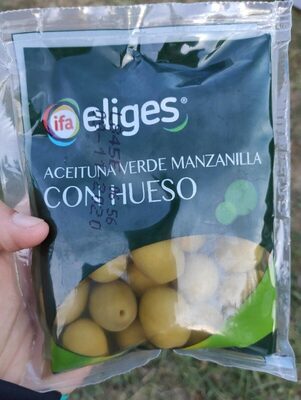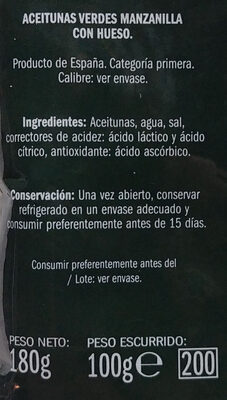Aceituna verde manzanilla con hueso - Eliges - 180 g (100 g)
This product page is not complete. You can help to complete it by editing it and adding more data from the photos we have, or by taking more photos using the app for Android or iPhone/iPad. Thank you!
×
Barcode: 8480012009239 (EAN / EAN-13)
Quantity: 180 g (100 g)
Packaging: Plastic
Brands: Eliges, Ángel Camacho Alimentación
Categories: Plant-based foods and beverages, Plant-based foods, Pickles, Olive tree products, Plant-based pickles, Olives, Green olives
Origin of ingredients: es:Hiszpania
Stores: BM
Countries where sold: Spain
Matching with your preferences
Environment
Carbon footprint
Packaging
Transportation
Report a problem
Data sources
Product added on by kiliweb
Last edit of product page on by packbot.
Product page also edited by openfoodfacts-contributors, pyrka, teolemon, thaialagata, yuka.ZllSZUg1Z2txY0FCbnNFajlEZVBwTjExM0tLZ2UwV3BLdmdZSVE9PQ.
If the data is incomplete or incorrect, you can complete or correct it by editing this page.











